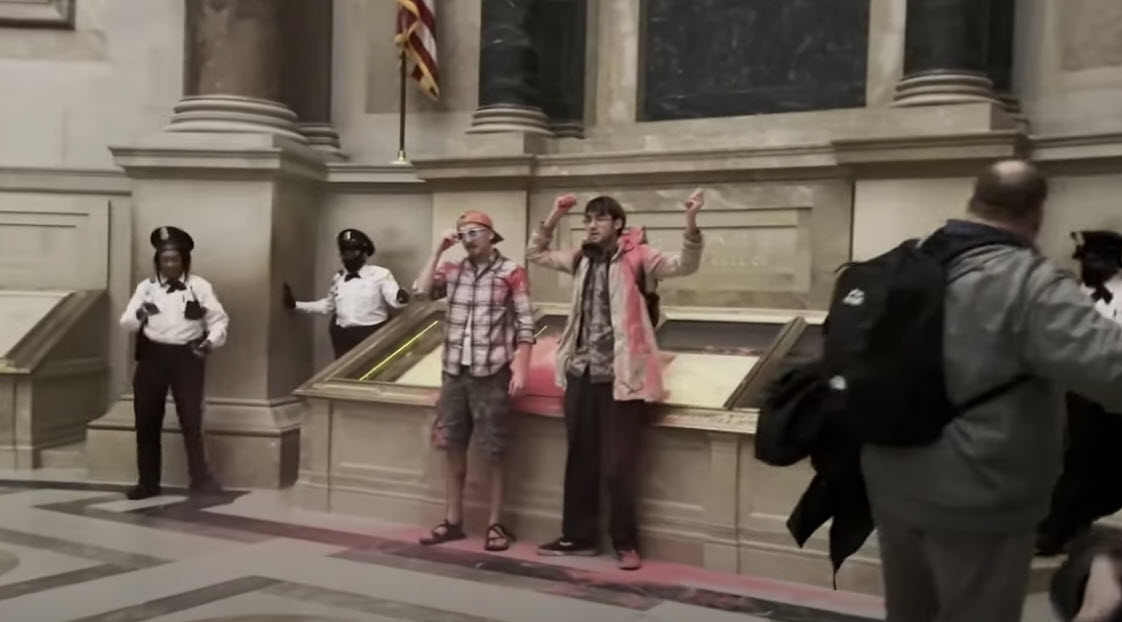In a significant legal development, climate activists involved in the red powder pouring incident over the U.S. Constitution’s display case at the National Archives are facing charges. The Justice Department announced that Donald Zepeda and Jackson Green have been charged with felony destruction of government property. As the legal proceedings unfold, this incident has ignited discussions around the intersection of activism, freedom of expression, and the consequences of direct action.
The charges stem from a video posted online that captures Zepeda and Green pouring red powder over the U.S. Constitution’s display case at the National Archives. In the video, the activists deliver a speech about climate change while standing in front of the coated case. The incident raises questions about the appropriate channels for expressing dissent and the legal boundaries of activism, particularly when it involves symbolic acts on national symbols.
The Justice Department’s decision to charge the activists with felony destruction of government property underscores the gravity with which the government views the incident. The charges carry potential legal consequences for Zepeda and Green, emphasizing the need for careful consideration of the methods employed in pursuing activism.
As of now, Zepeda and Green have not entered a formal plea to the charges. The legal proceedings are expected to shed light on the activists’ motivations, the symbolic nature of their act, and how the court interprets the balance between freedom of expression and the protection of national symbols.
The incident has sparked a range of reactions from the public. Some view the activists as passionate individuals drawing attention to urgent issues like climate change, while others criticize the act as a disrespectful and inappropriate means of protest. The legal proceedings are likely to intensify these debates and prompt discussions about the boundaries of activism in the contemporary socio-political landscape.
The charges against the climate activists carry broader implications for activism and free speech. The case will inevitably prompt discussions about the limits of dissent, the role of symbolic actions in advocacy, and the legal consequences activists may face when their methods involve direct actions on government property.



